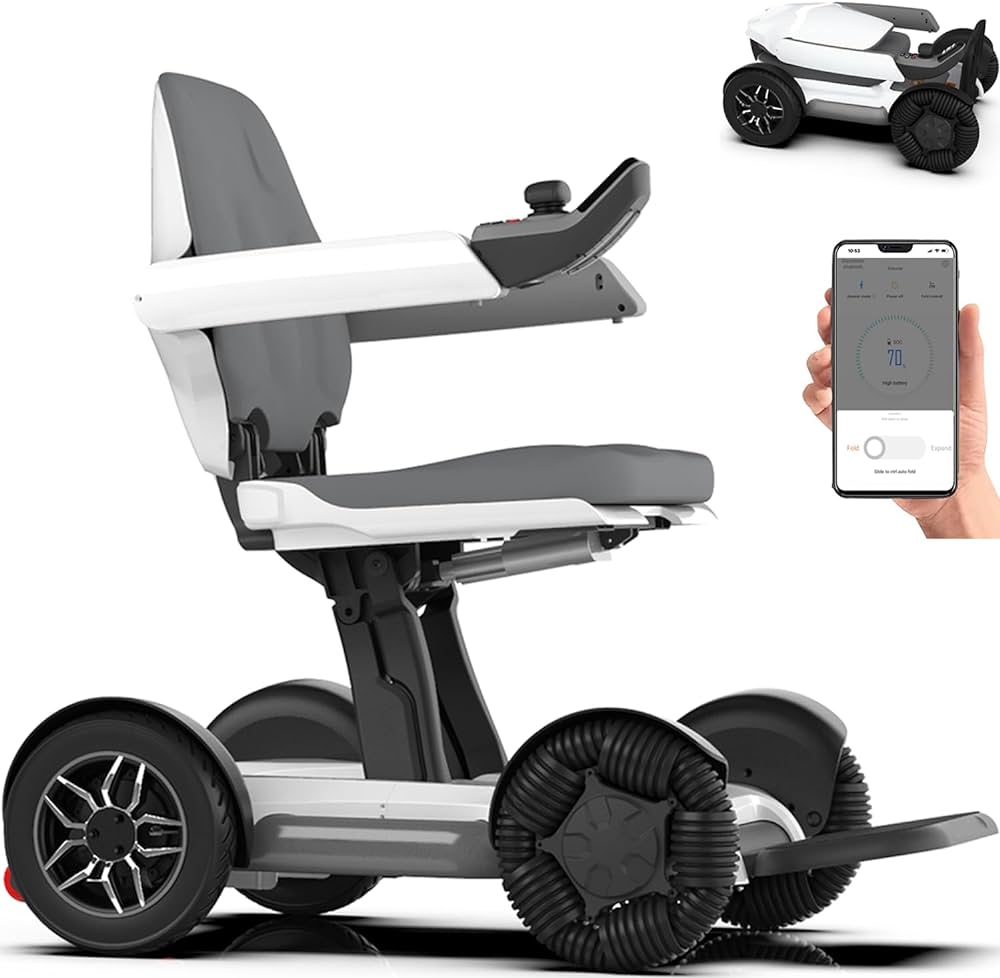Mobility scooter steering mechanisms allow the user to change direction and steer the scooter by pushing or pivoting the steering shaft. With this movement, the scooter can travel in the desired direction.
Introduction To Mobility Scooter Steering Mechanisms
The steering mechanisms of mobility scooters allow users to easily control their direction of movement. Scooters can be steered by pushing or pivoting the steering shaft, allowing for precise and effortless maneuverability.
Understanding how mobility scooter steering mechanisms work is essential for anyone using or considering using a mobility scooter. These mechanisms determine how the scooter is controlled and maneuvered, which directly affects the user’s experience and ability to navigate their surroundings. In this article, we will explore the different types of steering mechanisms commonly found in mobility scooters, the key controls, and how they function.
Understanding How Scooter Steering Works
Scooter steering is primarily based on the concept of pushing or pivoting the scooter’s steering shaft in the desired direction of movement. This pushing or pivoting action helps orient the scooter to travel in the selected direction. In conventional scooters, the steering shaft is located at the front of the scooter and can be turned by applying force through the handlebars. By turning the handlebars in one direction, the front wheel(s) of the scooter will also turn, allowing the user to change the direction of travel.
Key Controls On A Mobility Scooter
To operate a mobility scooter effectively, it is crucial to understand the key controls and their functions. The primary controls are typically located on the handlebars, providing the user with easy access to manipulate the scooter’s movement. These controls include:
- Speed Control: Enables the user to increase or decrease the speed of the scooter. It is usually operated using a lever or dial.
- Directional Control: Allows the user to move the scooter forwards or backwards. This control may consist of buttons or switches that can be operated using the fingers and thumbs.
- Brake Control: Engages the brakes to bring the scooter to a complete stop. The brake control can be in the form of a lever or button.
- Horn Control: Activates the horn, which is essential for alerting others when necessary. The horn control is usually located within easy reach on the handlebars.
Different Types Of Steering Mechanisms
Mobility scooters incorporate various steering mechanisms to cater to the diverse needs of users. The specific type of steering mechanism will differ based on the scooter model and manufacturer. Some common types of steering mechanisms found in mobility scooters include:
| Type | Description |
|---|---|
| Tiller Steering | The most common type of steering mechanism, where the controls and steering mechanism are integrated into a single structure called a tiller. The tiller is usually adjustable and can be positioned according to the user’s preference. |
| Delta Steering | Designed for users with limited hand dexterity, delta steering replaces the traditional handlebars with a delta-shaped steering wheel. This wheel allows for easier operation and control. |
| Joystick Steering | Primarily used in power wheelchairs, joystick steering is increasingly being adopted in mobility scooters. Users can control the scooter’s direction and speed by manipulating the joystick in the desired direction. |
It is important to consider your individual needs and preferences when choosing a mobility scooter with the right steering mechanism.
Tiller Steering Vs. Other Steering Mechanisms
The mobility scooter steering mechanisms include tiller steering, which allows the user to steer the scooter by pushing or pivoting the steering shaft in the desired direction of movement. This mechanism offers easy and precise control for navigating in different directions.
Exploring Tiller Steering
Tiller steering is one of the most common and widely used steering mechanisms in mobility scooters. It refers to the control and steering mechanism located at the front of the scooter. The tiller handlebars are connected to the front wheels of the scooter and allow the user to control the direction and speed of the scooter by simply pushing or pulling the tiller in the desired direction.
Pros And Cons Of Tiller Steering
Tiller steering offers several advantages that make it a popular choice for many users. Some of the pros of tiller steering include:
- Intuitive control: Tiller steering is easy to understand and operate, making it accessible to users of all ages and abilities.
- Maneuverability: With tiller steering, users can easily navigate tight spaces and make sharp turns, providing them with greater mobility and independence.
- Customization options: Many mobility scooters with tiller steering offer adjustable tiller height and position, allowing users to find the most comfortable and ergonomically correct position for their hands and arms.
- Visibility: Tiller steering allows the user to have better visibility of the surroundings, as they are positioned closer to the front of the scooter.
However, there are also a few cons to consider when it comes to tiller steering:
- Less stability at higher speeds: Tiller steering can become less stable when driving at higher speeds, as the weight distribution shifts towards the front of the scooter, making it more susceptible to tipping forward.
- Requires hand and arm strength: Users with limited hand or arm strength may find tiller steering more challenging to control, especially when maneuvering on uneven terrain or inclines.
- Limited legroom: Some users may find tiller steering restrictive in terms of legroom, as the tiller typically extends forward from the front of the scooter.
Alternative Steering Mechanisms
While tiller steering is a popular choice, there are also alternative steering mechanisms available for mobility scooters. These include:
- Joystick steering: Joystick steering offers an alternative control option for individuals who may have limited hand or arm strength. The user can control the direction and speed of the scooter by simply moving the joystick in the desired direction.
- Foot pedal steering: Some mobility scooters feature foot pedal steering, where users can control the direction of the scooter by using their feet instead of their hands.
- Handlebar steering: Handlebar steering resembles the steering mechanism found in bicycles. This type of steering allows users to steer the scooter by turning the handlebars in the desired direction.
Each alternative steering mechanism has its own set of advantages and disadvantages, and the choice ultimately depends on the individual’s specific needs and preferences.
Enhancing Maneuverability: Factors To Consider
The steering mechanism is a crucial aspect of mobility scooters that directly impacts maneuverability. Enhancing maneuverability is essential to ensure a smooth and comfortable ride for individuals with mobility issues. When it comes to improving maneuverability, there are several factors to consider. In this section, we will discuss the importance of turning radius, factors affecting maneuverability, and choosing a scooter with optimal steering performance.
Importance Of Turning Radius
The turning radius of a mobility scooter refers to the minimum space required for the scooter to make a complete 180-degree turn. A smaller turning radius allows for greater maneuverability in tight spaces, making it easier to navigate through narrow hallways, doorways, and crowded areas. It also enables users to make sharp turns and negotiate obstacles with ease, providing them with more freedom and independence.
Factors Affecting Maneuverability
Several factors contribute to the overall maneuverability of a mobility scooter. These include:
- Scooter Size and Weight: The size and weight of the scooter play a significant role in maneuverability. Lighter and more compact scooters are generally easier to maneuver, especially in confined spaces. They offer improved agility and make it simpler to navigate around obstacles.
- Wheel Configuration: The configuration of the wheels affects how the scooter handles. Different wheel setups, such as three-wheel and four-wheel designs, have varying maneuverability characteristics. Three-wheel scooters tend to have a smaller turning radius and are better suited for indoor use. On the other hand, four-wheel scooters offer greater stability and are ideal for outdoor use on uneven terrain.
- Suspension System: A well-designed suspension system helps absorb shocks and vibrations, providing a smoother ride. It enhances maneuverability by ensuring that the wheels maintain contact with the ground, even over rough surfaces.
- Motor Power and Torque: The power and torque of the motor determine the scooter’s ability to accelerate and climb inclines. A more powerful motor can enhance maneuverability by allowing the scooter to navigate gradients and uneven terrain with ease.
Choosing A Scooter With Optimal Steering Performance
When selecting a mobility scooter, it is crucial to consider the steering performance. Here are a few key aspects to keep in mind:
- Test Drive: If possible, test drive the scooter to get a feel for its steering capabilities. This will help you determine if it meets your maneuverability requirements.
- Turning Radius: Consider the turning radius and ensure it suits your specific needs. If you frequently navigate tight spaces, opt for a scooter with a smaller turning radius.
- Wheel Configuration: Select the wheel configuration that aligns with the intended usage. Assess your environment and determine if a three-wheel or four-wheel scooter would be more suitable.
- Adjustable Steering Mechanism: Some scooters offer adjustable steering mechanisms, allowing users to customize the handlebar height and angle for optimal comfort and control.
By considering these factors, you can choose a mobility scooter with optimal steering performance, ensuring enhanced maneuverability and a more enjoyable riding experience.

Credit: comfygomobility.com
Frequently Asked Questions For Mobility Scooter Steering Mechanisms
How Does Scooter Steering Work?
Scooter steering works by pushing or pivoting the scooter’s steering shaft in the desired direction of movement. This motion orients the scooter to travel in the selected direction.
What Are The Controls On A Mobility Scooter?
The controls on a mobility scooter are located on the handlebars, allowing the user to change direction, adjust speed, and stop. These controls can be operated with the fingers and thumbs.
What Is Tiller Steering For Scooter?
Tiller steering for a scooter refers to the control and steering mechanism of the scooter. It typically contains the controls for driving the scooter forward or in reverse, as well as steering the front wheel or wheels. Different types of tillers may be available as options for different scooter models.
What Mobility Scooter Has The Best Turning Radius?
The Kymco Agility, Rascal Ventura, Drive Medical Sport Rider, and Drive Medical Foldie are mobility scooters with the best turning radius.
Conclusion
Scooter steering mechanisms play a crucial role in ensuring smooth and safe mobility for individuals. Understanding how scooter steering works and the controls on a mobility scooter is essential for users to navigate with ease. Tiller steering is a common type of control mechanism, with various options available to suit individual preferences.
By choosing a scooter with a tight turning radius, like the Kymco Agility or Rascal Ventura, users can enjoy enhanced maneuverability. Whether you’re in need of steering assembly parts or looking for a new scooter, consider these factors to enhance your mobility experience.

